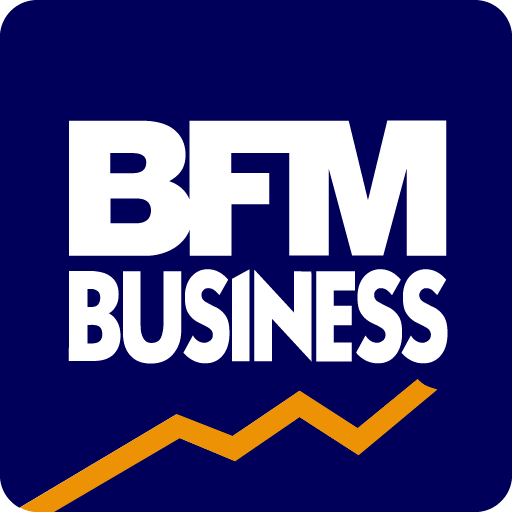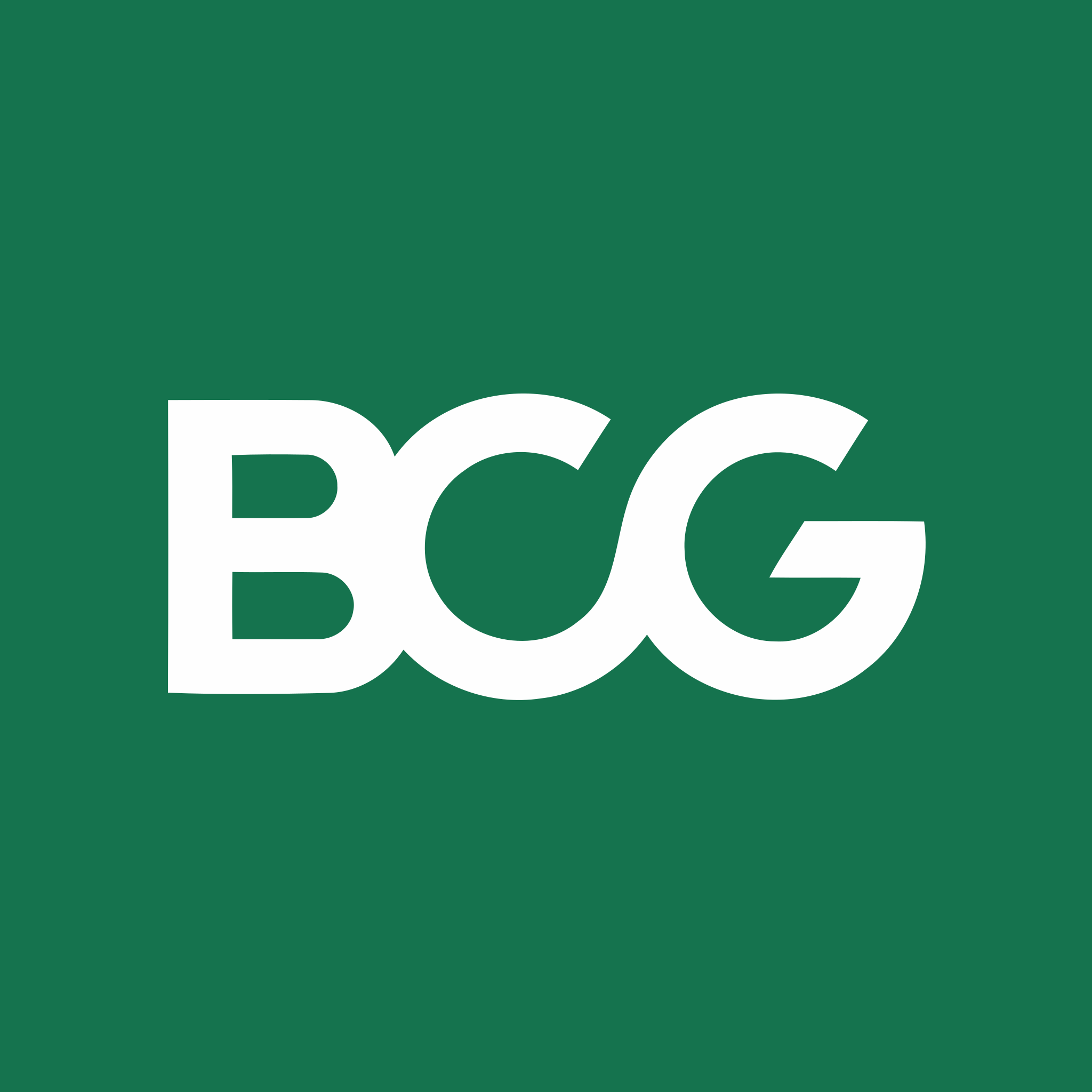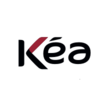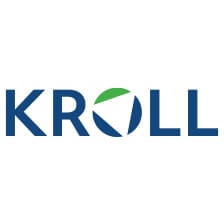Summary of our market study
The French market for dairy products is estimated at between 18 and 19 billion euros
The global dairy market, valued at 830 billion euros in 2022, is growing at over 6% a year.
The French milk market declined in volume by 2% between 2018 and 2022, with packaged milk, ultra-fresh products and cheese dominating, with average annual per capita consumption of 76 liters, 58 kg and 29 kg.
Organic dairy products hold market shares ranging from 4% to 9%. They fell sharply between 2016 and 2022.
Consumption of plant-based yoghurt and lactose-free products increased by 5% between 2020 and 2022
The abolition of milk quotas in 2015 marked a major turning point in the industry, leading to an increase in milk production, but also intensifying competition, impacting prices, and prompting farmers to group together to better influence the market.
French foreign trade in dairy products has also grown, with exports rising from €6.94 billion in 2018 to €8.87 billion in 2022. Imports rose from 4.02 billion euros in 2018 to 5.86 billion euros in 2022.
The 2018 Egalim law has led to a 10% increase in the value of contracts in price negotiations.
The big names in the dairy industry
- Lactalis: a cheese giant
- Danone: synonymous with health and well-being
- Savencia: experts in milk and dairy products
- Sodiaal: a cooperative group and a major player in the sector
- La Laitière yogurt brand
- Lactel
- Candia
to understand this market
Detailed content of our market study
 Inforamtion
Inforamtion
- Number of pages : 35 pages
- Format : Digital and PDF versions
- Last update :
 Summary and extracts
Summary and extracts
1 Market overview
1.1 Market overview and definition
Dairy products, also known as milk products, refer to food products derived from milk or made from it . Most of the time, these products are made from cow's milk, but other types of milk can also be used, such as raw goat's milk, sheep's milk, camel milk, yak milk, buffalo milk, etc., depending on the situation.
There are two product categories. On the one hand, finished products such as liquid milk, cheeses, creams, butters, yoghurts and dairy desserts, which are intended for mass consumption and out-of-home catering (canteens, hotels, etc.). On the other hand, there are intermediate products such as dry ingredients and products derived from milk, like milk powders or proteins, which are destined for the food industry.
Dairy products, at the heart of our daily diet, are renowned for their taste and nutritional qualities. The calcium, phosphorus, magnesium, proteins and vitamins they contain are essential for healthy growth, healthy bones and teeth, sports recovery, healthy intestinal flora and reduced cardiovascular risks.
The NAF codes concerned are
- 10.51A "Manufacture of liquid milk and fresh products".
- 10.51B "Manufacture of butter
- 10.51C "Manufacture of cheese
- 10.51D "Manufacture of other dairy products".
The global market is dynamic and growing, and should continue to do so over the next few years, with a CAGR of 6.40% up to 2030. The European Union is the world's leading producer of dairy products, with a market share of 35% in January 2024.
The French market has also been enjoying positive growth for several years, with sales increasing in value terms. However, a slight drop of 1.83% in volume sales is observed between 2018 and 2022, underlining an increase in prices for these products. Market professionals need to adapt to changes in demand and the various factors influencing the market, such as the availability of cow's milk.
1.2 A growing global market by 2030
The global dairy products market is dynamic and growing, valued at ***.** billion euros in ****, and should continue to do so until ****. Indeed, the global dairy products market is expected to reach $****.** billion in ****, with a CAGR of *.**% over the period ****-****.
Sales trends World, ****-****, in billions of dollars Source: ****
Global demand for dairy products continues to grow, particularly in developing countries, not least because of the high nutritional value of dairy products. Market players are focusing on launching new dairy products in untapped regions to expand their customer base and presence in different national markets.
Breakdown of global milk production by country World, ****, percentage source :clal.it
Firstly, Europe, and in particular the European Union (***), accounts for the largest share of global production with **%. This region is closely followed by Oceania, which includes countries such as Australia and New Zealand, with a **% share. In addition,other European countries outside the European Union also contribute significantly, accounting for **% of global production.
1.3 French market sees sales increase in value terms
Market size trends for dairy products France, ****-****, in billions of euros Source: ****
Sales trends for the dairy products market in France between **** and **** reveal a positive trend, marked by steady growth over this period. Total sales have risen significantly, from €**.** billion in **** to €**.** billion in ****, an increase of **.**%
This steady increase indicates sustained demand for dairy products in the country. However, it is important to note that the market has seen fluctuations from one year to the next. After a notable increase in ****, sales fell back slightly in **** before recovering in **** and ****.
These variations can be attributed to various factors, such as fluctuations in raw material prices, changes in consumer consumption habits, the effects of the COVID-** pandemic, the drop in milk collection...
Focus on milk :
Market size trends for milk and dairy products France, ****-****, in billions of euros Source: ****
Total sales increased gradually over this period, rising by *.**% from *.** billion euros in **** to *.** billion euros in **** .
Sales volume of milk France, ****-****, in billion liters Source : France Agrimer Trends in milk sales volumes in France between **** and **** show an overall trend towards stability, with a slight drop of *.**% in volumes sold between **** and ****. Sales volumes fall slightly, while ...
1.4 Trends in French foreign trade
Balance of trade in dairy products France, ****-****, in billions of euros Source: ****
Exports have grown steadily over this period, rising from €*.** billion in **** to €*.** billion in ****, an increase of **.**%.This increase underlines the competitiveness of French dairy products on the international market and their attractiveness to foreign consumers.
On the other hand, imports have also increased over the years, rising from *.** billion euros in **** to *.** billion euros in ****, with a marked **.**% increase between **** and ****. This increase in imports can be attributed to growing demand for specific dairy products not produced locally, as well as to fluctuations in supply and demand on the domestic market.
Despite the increase in imports, the market coverage ratio, which measures the ability of exports to cover imports, remains high but shows a slight downward trend, falling from ***.**% in **** to ***.**% in ****. This suggests that France remains largely in surplus in its dairy trade, but that this position has weakened very slightly over the years.
France's main dairy product customers France, ****, in millions of dollars Source: ****
China is France's main customer in this sector, with exports worth $***.*** million in ****. This strong Chinese demand reflects the growing appeal of French dairy products on the Asian market, particularly in ...
2 Demand analysis
2.1 Profile of the French dairy consumer
Breakdown of milk purchases in volume by region France, ****, %, %, %, %, %, %, %, %, %, %, %, % Source: ****
The Western region stands out as the main milk consumer, accounting for **.*% of total purchases, followed by the Paris region with a **.*% share.
The Centre Est and Sud Est regions also show significant volumes, accounting for **.*% and **. *% of purchases respectively. On the other hand, the North, East, Central West and South-West regions show more modest shares, fluctuating between *.*% and **.*%.
These data indicate a diversified geographical distribution of milk purchases in France, with a strong concentration in certain regions, probably influenced by factors such as consumption habits, population density and regional food preferences.
Distribution of milk purchases in volume by household income class France, ****, % (***) Source : France Agrimer The breakdown of milk volume purchases by household income class in France in **** reveals some interesting trends. Lower-middle-class households account for the largest share of milk purchases, with a **.*% share, followed by upper-middle-class households with **.*%. Modest and affluent households have relatively smaller shares, accounting for **.*% and **. *% of total milk purchases respectively. These data indicate that milk consumption is more widespread among middle-class households, suggesting that milk is a food product widely consumed by a wide range of households. This breakdown underlines the importance for dairy ...
2.2 Consumption of dairy products
Per capita consumption of dairy products per year France, ****, in kg or liters Source: ****
Per capita consumption of dairy products in France in **** varies according to product category. The data reveal thatpackaged milk is the most consumed dairy product, with an annual average of **.* liters per inhabitant. Ultra-fresh products follow closely behind, with an average consumption of **.* kg per inhabitant per year .Cheese comes third, with an average consumption of **.* kg per inhabitant per year.
Packed cream and solid fats , on the other hand, have lower consumption levels, at *.* kg and *.* kg per inhabitant per year respectively.
Evaluation of dairy products according to several criteria France, ****, score out of ** Source: ****
Overall, consumers give dairy products fairly high marks on various aspects. The"pleasure to consume" criterion obtains the highest average score, with *.* out of **, suggesting that dairy products are generally appreciated for their taste.
In contrast, the criterion"good for the planet" scored the lowest average rating, at *.* out of **, indicating that consumers are less concerned about the environmental impact of dairy products.
The other criteria, such as "good for your health", "essential", "fun to cook with" and "I trust", obtain average scores relatively close to each other, all around *.* to ...
2.3 France's favorite dairy brands
Favorite yogurt brands :
Favorite yogurt brands France, February ****, in Source: ****
La Laitière dominates the market with an **.*% approval rating, closely followed by Danone and Yoplait, with scores of **.*% and **% respectively. These three brands clearly stand out from their competitors in terms of popularity with French consumers.
Brands such as Taillefine, Danonino and Petits Filous are less popular than other market players.
Preferred butter brands :
French consumers' favorite butter brands France, February ****, in
The Présidentbrand is the most popular(***), making it the market leader. French consumers' strong preference for the Président brand testifies to its dominant position in the butter sector. Paysan Breton also has a high level of appreciation, albeit slightly lower than that of Président, at **.*%.
St Hubert and Bridel are also well placed, but with more modest scores of **.*% and **. *% respectively.
Favorite cheese brands :
French people's favorite cheese brands France, February ****, in Source: Opinionway French Favourite Cheese Brands survey, February **** First and foremost, Boursin stands out as the most popular brand, with a **.*% approval rating. This high level of popularity reflects Boursin's strong position in the French cheese market and consumer satisfaction with its products. Secondly, well-established brands such asEntremont, Tartare, Caprice des Dieux and ...
2.4 Declining demand for organic dairy products
The growth of organic products has been a major trend in the food industry in recent years, with organic dairy products occupying a prominent place among them. However, recent observation has revealed a noticeable drop in demand for these products. This decline in interest in organic dairy products is not an isolated phenomenon, but part of a wider context of declining sales of organic products in general.
Sales volume of organic products in total FLS FMCG vs N-* France, ****-****, % Source: ****
With inflation, it is interesting to look at sales trends in volume and not just in value, to avoid an analysis biased by price increases over **** and ****. Sales volumes are down significantly over all periods compared with the same period the previous year. Between **** and ****, there is a general downward trend in volume sales of organic products compared to the previous year (***). This decline extends over several consecutive months, with variations ranging from -*.*% to -**. *% compared to the same period the previous year. This situation may be linked, among other things, to the rationalization of assortments and a reduction in the number of organic references on shelves. This downward trend is even more pronounced from P* **** to P* ****, when ...
3 Market structure
3.1 Value chain
Source: ****
The dairy value chain begins with the production of milk (***), or they may sell them directly to dairy product manufacturers.
Some manufacturers have to buy in from semi-finished product manufacturers, if they don't have the capacity to manufacture themselves certain products needed for the production of dairy products, such as the flavourings used in flavoured yoghurts, for example.
Once finished, dairy products are sold via retail outlets (***) or via the catering trade.
3.2 Number of companies and number of employees
Several NAF codes correspond to the various dairy products:
**.**A "Manufacture of liquid milk and fresh products **.**B "Manufacture of butter **.**C "Manufacture of cheese **.**D "Manufacture of other dairy products".
These different NAF codes are therefore taken into account in the data below.
Number of establishments producing dairy products France, ****-****, in number of establishments Source: ****
The trend in the number of establishments producing dairy products in France between **** and **** shows an overall upward trend, although variations differ according to sub-category. Overall, the number of establishments rose by **.**% between **** and ****, from *** to ***.
All sub-categories showed a positive trend. Between **** and ****, "Manufacture of other dairy products" increased the most, with an evolution of **.**%.
This upward trend probably reflects sustained demand for dairy products in France, as well as a diversification of supply to meet different consumer needs.
Trend in the number of registered employees in dairy production France, ****-****, in number of employees Source : Urssaf Overall, the number of employees has stagnated, with a very slight increase of *.**% between **** and ****. Despite fluctuations from one year to the next, the total number of employees remains relatively constant over the period, hovering around **,*** . Cheese manufacturing represents the largest sector in terms of ...
3.3 Distribution of dairy products mainly through supermarkets
Breakdown of sales volumes by distribution channel France, ****, % sales Source: ****
The breakdown of volume sales of dairy products by distribution channel in France in **** shows a clear predominance of generalist channels, accounting for the vast majority of shares in all product categories. Indeed, these generalist channels capture around **% of sales of packaged milk, packaged cream, solid fats and ultra-fresh products, as well as almost **% of cheese sales. By contrast, specialized channels have a much smaller share of the market, accounting for only *% to *.*% of sales, depending on the product category.
Generalist channels include hypermarkets, supermarkets, EDMPs, convenience stores and online drive sites. Specialized channels include traditional shops (***), markets and fairs, and direct sales.
Breakdown of sales volume within the generalist distribution channel France, ****, % (***) Source: ****
The breakdown of volume sales of dairy products reveals a predominance of hypermarkets, which capture the largest share of all dairy product categories. Hypermarkets account for between **% and **.*% of sales of packaged milk, packaged cream, solid fats, ultra-fresh products and cheeses.
Supermarkets follow, with a share of between **.*% and **.*%, also reflecting a significant contribution to dairy sales. The so-called "EDMP" chains (***) and convenience stores also make a significant contribution to sales, with shares of up to **.*% for ...
3.4 A market impacted by reduced availability of cow's milk
Cow's milk collection France, ****- ****, in billion liters Source: ****
Between **** and ****, cow's milk collection in France showed a stable trend overall, but with a slight decrease. Between **** and ****, there was a *% decrease in cow's milk collection. Dairy cow herd France, ****-****, in millions of cows Source: ****
The number of dairy cows in France between **** and **** showed an overall downward trend, with a steady decline year on year. In ****, the herd stood at *.* million cows, before gradually declining to *.* million in ****, *.* million in ****, * million in ****, and finally to *.* million in ****. Between **** and ****, the dairy cow chaptel fell by **.*% This steady decline in the dairy cow herd raises several important considerations for the French dairy industry. Firstly, it may reflect structural changes in the agricultural sector, such as economic pressures on dairy farms, evolutions in breeding practices, or changes in agricultural and environmental policies. In addition, this trend may also be influenced by demographic factors, such as the ageing of farmers and the lack of generational succession in the sector. In terms of implications for the dairy industry, this decline in the dairy cow herd may have repercussions on national milk production and the availability of dairy products on the French market.
Production ...
3.5 A concentrated market with Lactalis and Danone in the lead
The French dairy products market is highly competitive on a European and global scale, but relatively concentrated in France. Thetwo French giants, Lactalis and Danone , have been battlingit out through innovation and mergers & acquisitions, although Savencia and Sodiaal have achieved significant results.In ****, for example, Danone acquired Follow Your Heart, the strategy behind which was to broaden Danone's product portfolio in plant-based dairy products. lactalis Corporation acquired Kraft Heinz's natural cheese business , thestrategy behind which was to enhance its product lines with new and innovative products and expand its revenues and market presence.
Rabobank's annual Global Dairy Top ** report shows that by ****, privately-owned Lactalis, owned by the Besnier family, has dethroned Nestlé, a long-standing titan of the industry, as the world's largest dairy company. Lactalis' focus on organic growth, coupled with a global M&A strategy, has propelled the company from ninth place in **** to a dominant position in **** .
Sales of French dairy market leaders France, ****, in billions of euros source: Global Diary Top **
Sales figures for the leaders in the French milk market in **** reveal the strong dominance of a few large companies. At the top of the list is Lactalis, with sales of **.* billion euros, confirming its position as ...
4 Offer analysis
4.1 The different types of dairy products
Dairy products are made up of different products, the main ones being: packaged milk, i.e. milk in bottles; packaged cream, often in bricks; solid fats, ultra-fresh products and cheeses. All these products can be further segmented according to their different forms and tastes. The following table summarizes the different types of dairy products:
4.2 Price analysis
Trend in annual consumer prices for packaged milk France, ****, index Source: ****
The packaged milk price index, set at *** in ****, has risen to ***.* in ****. The increase was rather gradual from **** to ****, rising from *** to ***.*. Then there was a significant rise between **** and ****, with the index increasing by *.* points.
This steady increase reflects a number of economic and commercial factors that influence milk prices on the market. These include fluctuations in production costs, changes in supply and demand, and competitive dynamics in the dairy sector.
Here's a closer look at butter, the dairy product that has seen the biggest price changes:
Annual consumer price trends for butter France, ****, in index Source: France Agrimer The butter price index, set at *** in ****, has risen sharply in recent years, reaching ***.* in ****.
Several reasons have been put forward to explain this sudden sharp rise in butter prices. Firstly, European milk production has fallen, reducing the supply available on the market. This drop in production can be attributed to a variety of factors, such as unfavorable weather conditions, fluctuating farm input prices and stricter environmental regulations. As a result, butter supply is insufficient to meetrising demand, particularly from third countries such as China, which have increased their butter ...
4.3 Offer diversification through innovation
The dairy products market is a vast one, encompassing many products, both original and processed. One of the major challenges for alternative dairy brands is to succeed in diversifying their product offering to adapt to new demands.
Over the last ten years, the sector has undergone a veritable revolution, with the introduction of new options such as organic, lactose-free and no-sugar-added products, as well as alternatives to traditional milk such as sheep's or goat's milk and plant-based offerings. This diversification has also manifested itself inthe creation of hybrid products, combining dairy and vegetable ingredients to meet the varied preferences of consumers.this diversification has also manifested itself through the creation of hybrid products, combining dairy and vegetable ingredients to meet the varied preferences of consumers, while offering a wide range of options in terms of taste and functionality.
Growth in sales of plant-based yogurts France, ****-****, in millions of euros Source: ****
Between **** and ****, sales of plant-based yogurts in France grew by*%from**.* million euros to **.* million euros.This moderate, if steady, increase suggests growing consumer interest in plant-based alternatives in the dairy sector.
It also reflects the growing importance attached by manufacturers to diversifying their product portfolios to meet changing consumer ...
5 Regulations
5.1 The abolition of milk quotas in 2015
Milk quotas, in force between **** and ****, were abolished on *st april ****. The aim of abolishing quotas is twofold. Firstly, it reflects the European Union's desire to disengage from the management of domestic agricultural markets. Prices, which will henceforth be deregulated, will be set according to the balance between supply and demand. Secondly, the aim is to enable European processors to establish themselves as leading players on a global scale, in a context of growing consumption, driven by emerging countries, notably China.
The abolition of quotas has a significant impact on the dairy industry's value chain. Upstream, the abolition of quotas has led to an increase in milk collection, which in turn has lowered milk prices. As a result, to increase their weight upstream and downstream in the value chain, farmers have tended to join forces in recent years to form larger structures. Farm size has gradually increased. Downstream, better supply conditions have enabled production to increase. Higher production levels have led to intensified competition and the search for new international outlets.
5.2 The Egalim Law in 2018
In October ****, a food law, known as Egalim, the result of the États généraux de l'alimentation, was passed. It aims for a better distribution of value between producers, industrialists and distributors, which requires "fair remuneration for farmers to enable them to live with dignity from their work" . In particular, it stipulates that "the contract and associated price will be proposed by farmers, taking into account production costs. Farmers will be able to influence negotiations by forming producer organizations and strengthening inter-professional bodies". Negotiations on price increases between central purchasing agencies and manufacturers have intensifiedand led to an average **% increase in the value of contracts.
6 Positioning the players
6.1 Segmentation
- Savencia Fromage & Dairy groupe
- La Fermière
- Even Groupe
- Lactalis Groupe
- Biolait
- Laïta Regilait
- Les Maitres Laitiers du Cotentin
- Danone Groupe France
- Yoplait France (Sodiaal Groupe)
- 56 le marché du lait et des produits laitiers en France
- Sill Entreprises
- LSDH Laiterie de Saint Denis de l'Hôtel - L'Abeille
- Rians - Laiteries H . TRIBALLAT
- Coopérative Laitière Prospérité Ingredia
- Lactalis Nutrition Santé
- Terra Lacta Cooperative
- Lactel (Groupe Lactalis)
- Lact’Union Coopérative
- Odéon (Maitres Laitiers du Cotentin Coopérative)
- Le Gall Laiterie (Sill Groupe)
- Laiterie de Montaigu
- Yogourmand - Yeo Frais - Maîtres Laitiers du Cotentin
- Pechalou Laiterie
- LaÏta Coopérative - Mamie Nova
- Laiterie du Périgord Péchalou
- Laiterie Collet
- Ermitage - Union Laitière Vittelloise
- La Laitière (Nestlé)
- Agour
- Avi Charente
- Babydrink
- Babynov
- Bel
- Blédina
- Bonilait Protéines
- Candia
- Canelia Petit Fayt Beurre
- Canelia Petit Fayt Lait
- Canelia Rouvroy Poudre
- Celia Laiterie De Craon
- Cie Laitière Des Mascareignes (Cilam)
- Cilam L&J
- Cilam Plf
- Cloche D'Or
- Coopérative A Comté De Courlaoux
- Cooperative Laitière De La Sèvre
- Danone Produits Frais France (Dpff)
- Etoile Du Quercy (Sté Fromagere De Loubressac)
- Etoile Du Vercors (Sté Fromagere De Saint Just)
- Ets Beillevaire
- Eurial Food Service & Industry
- Eurial Ingredients Et Nutrition
- Eurial Ultra Frais
- Eurosérum
- Flechard Laiterie Du Pont Morin
- Fromager Savoyard
- Fromagerie Badoz
- Fromagerie Baechler
- Fromagerie Boursin
- Fromagerie D'Anjouin
- Fromagerie De Clerval
- Fromagerie De La Haute Combe
- Fromagerie De La Tournette
- Fromagerie De Livarot
- Fromagerie De Neufchateau
- Fromagerie Du Plessis
- Fromagerie Edouard Conus
- Fromagerie Germain
- Fromagerie Guilloteau
- Fromagerie Jacques Delin
- Fromagerie Milleret (Clndl)
- Fromagerie Pierre Jacquin Et Fils
- Fromagerie Renard Gillard
- Fromagerie Reo
- Fromagerie Rouzaire
- Fromageries Arnaud
- Fromageries Bel Production France (Fbpf)
- Fromageries Chabert
- Fromageries Des Hauts De Savoie
- Fromageries Henri Hutin
- Fromageries Vagne Constant Et Compagnie
- Fruitière Du Mont Rivel (Sté Cooperative Agricole Fromagere Fruitiere Du Mont Rivel)
- Gillot
- Groupe Lactalis
- Ingredia
- Jura Terroir
- Marcel Charrade Et Cie
- Marcillat Corcieux
- Marcillat Loulans
- Masson
- Mons Fromager Affineur
- Monts & Terroirs
- Olga
- Paturages Comtois
- Perrin Vermot
- Picandine
- Pyrenefrom (Spfp)
- Sa Du Pre Foret
- Savoie Yaourt
- Schmidhauser
- Schreiber France
- Socrema (Sté De Fabrication De Glaces Et De Cremes Glacees)
- Solaipa
- Sté Cooperative Laitiere Du Beaufortain
- Sté Industrielle De Saint Florent
- Sté La Fermière
- Sté Laitière De Clermont
- Sté Laitière De L'Hermitage
- Sté Laitière De Mayenne
- Sté Laitière De Pontivy
- Sté Laitière De Retiers
- Sté Laitière De Rodez
- Sté Laitière De Vitré
- Sté Laitière Des Volcans D'Auvergne (Slva)
- Sté Laitière Du Blavet
- Sté Laitière Du Bocage Ornais (Bolaidor)
- Sté Laitière Montauban
- Sté Réunionnaise Laitière (Sorelait)
- Synutra France International
- Tippagral
All our studies are available online in PDF format
Take a look at an example of our research on another market!
 Choosing this study means :
Choosing this study means :
Access to more than 35 hours of work
Our studies are the result of over 35 hours of research and analysis. Using our studies allows you to devote more time and added value to your projects.
Benefit from 6 years' experience and over 1,500 industry reports already produced
Our expertise enables us to produce comprehensive studies in all sectors, including niche and emerging markets.
Our know-how and methodology enable us to produce reports that offer unique value for money.
Access to several thousand articles and paid-for data
Businesscoot has access to all the paid economic press as well as exclusive databases to carry out its market research (over 30,000 articles and private sources).
To enhance our research, our analysts also use web indicators (semrush, trends, etc.) to identify market trends and company strategies. (Consult our paying sources)
Guaranteed support after your purchase
A team dedicated to after-sales service, to guarantee you a high level of satisfaction. +44 238 097 0676
A digital format designed for our users
Not only do you have access to a PDF, but also to a digital version designed for our customers. This version gives you access to sources, data in Excel format and graphics. The content of the study can therefore be easily retrieved and adapted for your specific needs.
 Our offers :
Our offers :
the Milk Market | France
- What are the figures on the size and growth of the market?
- What is driving the growth of the market and its evolution?
- What is the positioning of companies in the value chain?
- Data from several dozen databases
Pack 5 études (-25%) France
- 5 études au prix de 74 €HT par étude à choisir parmi nos 1200 titres sur le catalogue
- Conservez -25% sur les études supplémentaires achetées
- Choisissez le remboursement des crédits non consommés au terme des 12 mois (durée du pack)
Consultez notre catalogue d’études sectorielles


















